Introduction
Many parents want more personalized learning experiences for their kids, which is why homeschooling has become more popular as an option for kids. You’re not the only one thinking about this road. It can be difficult to figure out which way best suits your family’s wants because there are so many different types of homeschooling offered. With its in-depth look at different homeschooling methods, this guide will help you make an informed choice by giving you insights, examples, and useful tips.
The Homeschooling Landscape
Homeschooling is a way of teaching where parents guide their kids’ learning and often change the way they are taught to fit each child’s needs. Different people have different needs, so there isn’t just one way to solve the problem. Knowing about these choices can make a big difference in your educational journey, whether you’re a parent, a teacher, or someone about to start homeschooling.
Traditional Homeschooling
What is Traditional Homeschooling?
In traditional homeschooling, parents are the main teachers, and the setting is organized like in regular schools. It usually includes set lessons, textbooks, and tests, which gives parents and students a context they are used to.
Benefits of Traditional Homeschooling
One of the best things about it is that it has a clear framework. Through homework and tests, parents can easily keep track of their child’s growth and make sure that important academic standards are met. Additionally, standard homeschooling may make the switch easier for families who are new to it because it is more like going to school.
Challenges and Considerations
Traditional homeschooling can be helpful for some, but it can also be strict, which could stop kids from being creative and exploring. Structure and freedom must be balanced so that each person can learn and explore at their own pace.
Unschooling: A Learner-Driven Approach
Defining Unschooling
When you unschool, you let your child lead the way in learning and encourage their natural interest and discovery. Instead of following a set programme, a child’s education is based on his or her hobbies and experiences. This encourages a love of learning that lasts a lifetime.
The Benefits of Unschooling
Unschooling helps kids be creative, think critically, and be self-motivated. Kids learn at their own pace and by discovering things that interest them, which makes them more interested and helps them understand more.
Potential Challenges
Some parents find it hard to trust their children to learn on their own when they don’t send them to school. To ensure a well-rounded education, it’s important to give kids a place with lots of different tools and chances.
Charlotte Mason Method
Who was Charlotte Mason?
Charlotte Mason was a British teacher who pushed for a more complete way of teaching that included art, writing, and nature study. Her theory stresses taking care of the whole child, including their beliefs and character.
Key Elements of the Charlotte Mason Method
Living books, storytelling, and small lessons are what this method is all about. The narration gets kids to talk about what they’ve learnt, which helps them understand better. Living books are interesting, well-written works that bring subjects to life.
Why Choose the Charlotte Mason Method?
With the Charlotte Mason method, kids learn to love learning and become good people. It helps people value the arts and nature, giving them a well-rounded education that goes beyond schoolwork.
Montessori Homeschooling
The Montessori Philosophy
Dr. Maria Montessori developed the Montessori method, which emphasizes interactive, kid-centered learning. It encourages kids to be independent by giving them things they can do on their own.
Montessori Homeschooling at Home
Parents who use Montessori at preschool set up an area with things that encourage kids to explore and learn. Kids are usually only given short lessons and are told to work at their own pace and follow their hobbies.
Advantages and Considerations
Montessori homeschooling helps kids learn to be independent, solve problems, and think critically. Some families may want to think about this, though, because it needs careful planning and spending money on good supplies.
Waldorf Homeschooling
Understanding the Waldorf Approach
Rudolf Steiner developed Waldorf homeschooling, which combines academic work with practical and artistic tasks to foster whole-person development. It stresses inspiration, creation, and getting in touch with nature.
Key Features
Storytelling, art, and hands-on projects are all part of Waldorf education, which helps students feel deeply connected to what they are learning. It usually has a pace or habit that fits with the steps of growth of a child.
Is the Waldorf Method Right for You?
Waldorf homeschooling provides a safe and artistic setting. But you have to follow its own mindset and set of rules, which might not work for every family.
Classical Education
What is Classical Education?
Classical education is an old-fashioned method that focuses on three things: reasoning, speech, and grammar. It stresses the study of ancient writings and languages, as well as critical thought and reasoning.
Implementing Classical Education at Home
Parents lead their kids through the three steps of the trivium, starting with basic skills and moving on to more difficult logic and speech as the years go by.
Pros and Cons
Classical schooling builds strong speech and thinking skills. But it takes hard work and a commitment to the family’s educational beliefs and goals.
Eclectic Homeschooling
What is Eclectic Homeschooling?
Eclectic homeschooling takes parts from different approaches, so families can change how they teach to fit their own wants and tastes.
Why Choose Eclectic Homeschooling?
This adaptable method takes the best parts of several different educational ideas and fits the child’s learning style and hobbies.
Considerations for Eclectic Homeschooling
Even though diverse homeschooling is flexible, it needs to be carefully planned and organised to make sure that all of the students get a well-rounded education.
Online Homeschooling
The Rise of Online Homeschooling
Online homeschooling uses digital tools and virtual classes to give students more freedom and access to a wide range of subjects taught by professionals.
Benefits of Online Homeschooling
Students can learn anywhere with online homework, which is convenient and adaptable. It can be a great choice for families with busy lives or people who want to take specialized classes.
Challenges and Solutions
Online homeschooling is handy, but it takes discipline and time management to make it work. For a healthy learning setting, parents should make sure that their kids get a good mix of screen time and things that don’t involve screens.
Choosing the Right Homeschooling Method
Assessing Your Family’s Needs
Choose a homeschooling method that fits your family’s values, goals, and preferred ways of learning. It’s important to think about your specific needs because what works for one family might not work for another.
Experimenting and Adapting
It’s okay to try new things and change how you do things over time when you’re homeschooling. You should be open to change and ready to make changes based on what your child wants and needs.
Seeking Support and Resources
Get in touch with homeschooling groups and tools in your area to get advice and help. Working together with other homeschooling families can be very helpful, whether it’s through online forums or real-life groups.
Conclusion
Homeschooling is fun and fulfilling, allowing you to customize learning for your kid. By investigating different approaches, recognizing their pros and cons, and being flexible, you can create a homeschooling plan that inspires your kids to learn and prepares them for the future. Explore resources and join homeschooling networks to meet like-minded families if you’re ready. Your experience in homeschooling has begun!


